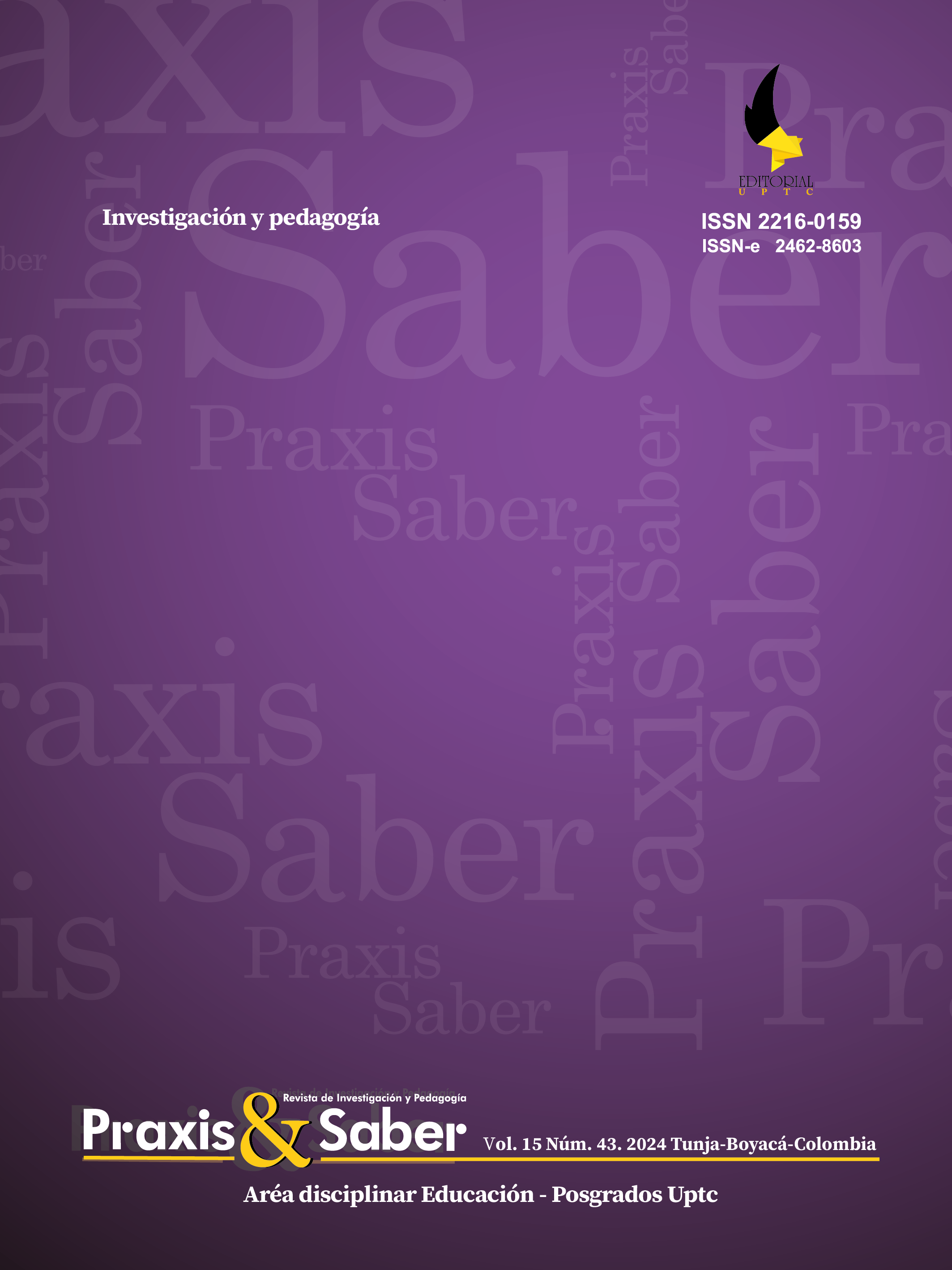Experience of Canine Therapy as an Educational Strategy for Students with Multiple Disabilities

Abstract
Canine therapy is a learning strategy that can be applied to students with multiple disabilities as a significant support that favors their learning process, autonomy, and holistic development. The purpose of this research is to analyze how animal assisted therapy supports students with multiple disabilities attending a special education institution in Quito. A qualitative, descriptive methodology was used. The Dunn Sensory Profile was applied to a group of twelve children between the ages of six and nine, from which an action plan was developed. Information was recorded in field journals, and interviews were conducted with teachers and family members to understand their perceptions of the canine therapy sessions. The results showed that students developed communication skills, improved their participation in group activities and games, and had better emotional management and tolerance to sensory stimuli. The benefits were recognized by both teachers and families. Therefore, it is concluded that canine therapy can be a beneficial tool for working with people with disabilities.
Keywords
Multiple disabilities, Canotherapy, Education
References
- Acle, G. y Olmos, A. (1998). Problemas de Aprendizaje. Enfoques Teóricos. Universidad Autónoma de México.
- Andreasen, G., Stella, T., Wikison, M., Szczech, C., Hoelzel, A., & Hendricks, L. (2017). Animal assisted therapy and occupational therapy. Occupational Therapy, Schools, Early Intervention, 10(1), 1-17. https://doi.org/10.1080/19411243.2017.1287519
- Ayres, A. (2006). La integración sensorial y el niño. Trillas.
- Beetz, A., Uvnäs-Moberg, K., Julius, H., Kotrschal, K. (2012). Psychosocial and psychophysiological effects of human-animal interactions: the possible role of oxytocin. Frontiers in Psychology, 3, 1-13. https://doi.org/10.3389/fpsyg.2012.00234
- Bernabéu, E. (2017). La atención y la memoria como claves del proceso de aprendizaje. Aplicaciones para el entorno escolar. ReiDoCrea, 6(2), 16-23.
- Bogdashina, O. (2007). Percepción sensorial en el autismo y síndrome de Asperger. Autismo Ávila.
- Boyt, B., Gillen, G., Scaffa, M. y Cohn, E. (2016). Willard & Spackman. Terapia Ocupacional. Editorial Médica Panamericana.
- Cabán, M., Nieves, R. y Álvarez, M. (2014). Desarrollo de la terapia asistida por animales en psicología. Informes psicológicos, 14(2), 125-144.
- Caravaca, C. (2019). El trabajo social en las intervenciones asistidas con animales. Trabajo Social Hoy, 87, 85-102. http://dx.doi.org/10.12960/TSH.2019.0012
- Caravaca, C. (2020). Educación asistida con animales en contextos educativos escolares: beneficios y utilidades. En M. Pérez (ed.), La convivencia escolar: un acercamiento multidisciplinar a las nuevas necesidades (pp. 119-129). Dykinson.
- Correa, M., Cárdenas, A., Rivera, H. y Cadavid, A. (2019). Educación asistida con perros: aplicaciones pedagógicas en contextos educativos. Inclusión y Desarrollo, 6(1), 15-23.
- Córdova-Cando, D., Gaona-Cueva, L., Vivanco-Luzuriaga, F. y Cando-Jiménez, D. (2021). Los canes y la conexión emocional en la infancia. Polo del Conocimiento, 6(6), 763-776. https://doi.org/10.23857/pc.v6i6.2786
- Donoso, O. (2012). Sordoceguera y necesidades educativas múltiples en Chile. Académica Española.
- Felicetti, V. y Moro, R. (2013). Participación de perros en la asistencia a estudiantes con necesidades especiales. Decisio, 35, 31-35.
- Flores, R. y Lino, G. (2020). Utilidad de la terapia asistida con perros en la volición de niños con parálisis cerebral en segundo grado de primaria del colegio la Alegría en el Señor, La Molina, septiembre 2013. Estudio piloto. Revista Herediana de Rehabilitación, 2(2), 60-65. https://doi.org/10.20453/rhr.v2i2.3714
- Fonseca, H. y Bencomo, M. (2011). Teorías del aprendizaje y modelos educativos. Salud, Arte y Cuidado, 4(Suplemento 1), 71-93.
- Hill, J., Ziviani, J., Driscoll, C., & Cawdll-Smith, J. (2019). Canine assisted occupational therapy for children on the autism spectrum: challenges in practice. British Journal of Occupational Therapy, 83(4), 215-219. https://doi.org/10.1177/030802261985885
- Jalongo, M., Astorino, T., & Bomboy, N. (2004). Canine visitors: the influence of therapy dogs on young children’s learning and well-being in classrooms and hospitals. Early Childhood Education Journal, 32, 9-16. https://doi.org/10.1023/B:ECEJ.0000039638.60714.5f
- Martínez, R. (2008). La terapia asistida por animales: una nueva perspectiva y línea de investigación en la atención a la diversidad. Boletín de Estudios e Investigación, Indivisa, 9, 117-146.
- Marszatek, A., Kasperczyk, T., & Walaszek, R. (2022). Dog Therapy in Supporting the Rehabilitation Process of Children with Autism. Medical Rehabilitation, 26(3), 58-63. https://doi.org/10.5604/01.3001.0015.8748
- Navas, R. (2020). Therapies with animals in neurodiversity. Revista Internacional de Apoyo a la Inclusión, Logopedia, Sociedad y Multiculturalidad, 6(1), 118-123. https://doi.org/10.17561/riai.v6.n1.11
- Oaklander, V. (2001). Ventanas a nuestros niños. Cuatro Vientos.
- ONU. (2006). Convención sobre los derechos de las personas con discapacidad y su protocolo facultativo de la Naciones Unidas. Naciones Unidas.
- Pereda, E. (2015). Terapia asistida con perros en pacientes con discapacidad intelectual gravemente afectados. Universidad Pontificia Comillas de Madrid.
- Sanmartín, R. (2012). El pensamiento incorporado percepcional - lingüístico - lógico. Sophía, 13, 25,72.
- Suárez, J. (2022). Experiencia de educación asistida con perro como herramienta pedagógica en las aulas universitarias. TECHNO REVIEW. Revista Internacional de Tecnología, Ciencia y Sociedad, 12(3), 1-11. https://doi.org/10.37467/revtechno.v11.4423
- Rehn, A., Caruso, V., & Kumar, S. (2023). The effectiveness of animal-assisted therapy for children and adolescents with autism spectrum disorder. A systematic review. Complementary Therapies in Clinical Practice, 50, 1-12. Churchill Livingstone. https://doi.org/10.1016/j.ctcp.2022.101719
- Roqueta, C., Clemente Esteván, R. y Flores Buils, R. (2012). Cognición social y competencia pragmática. El caso de los niños y niñas con trastorno específico del lenguaje. International Journal of Psychological Research, 5(1), 59-69.
